
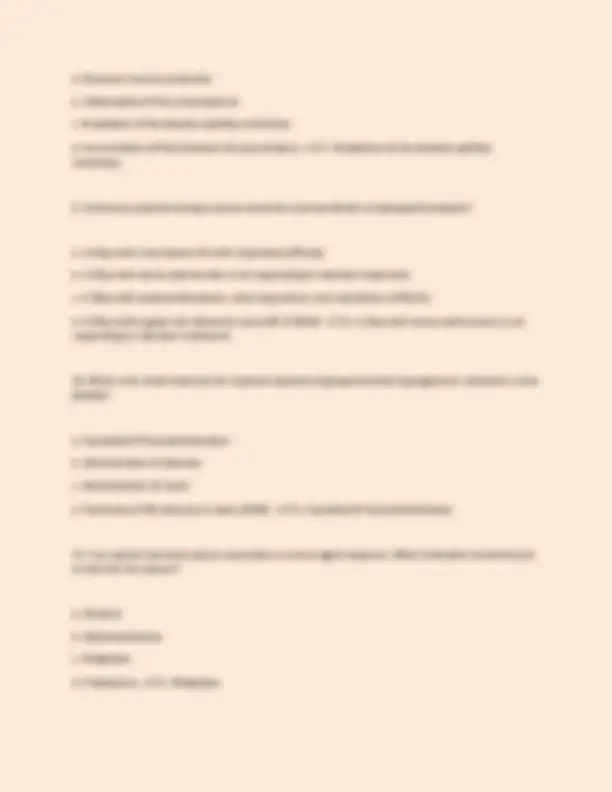
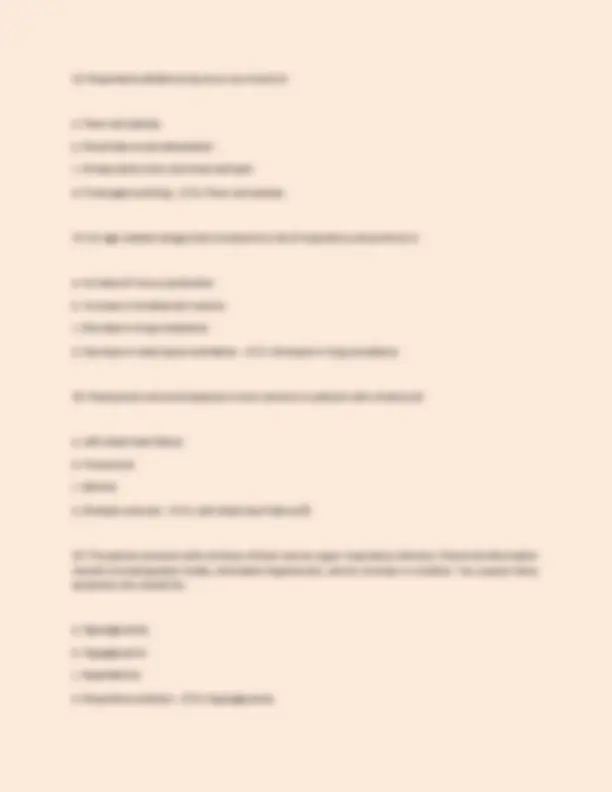
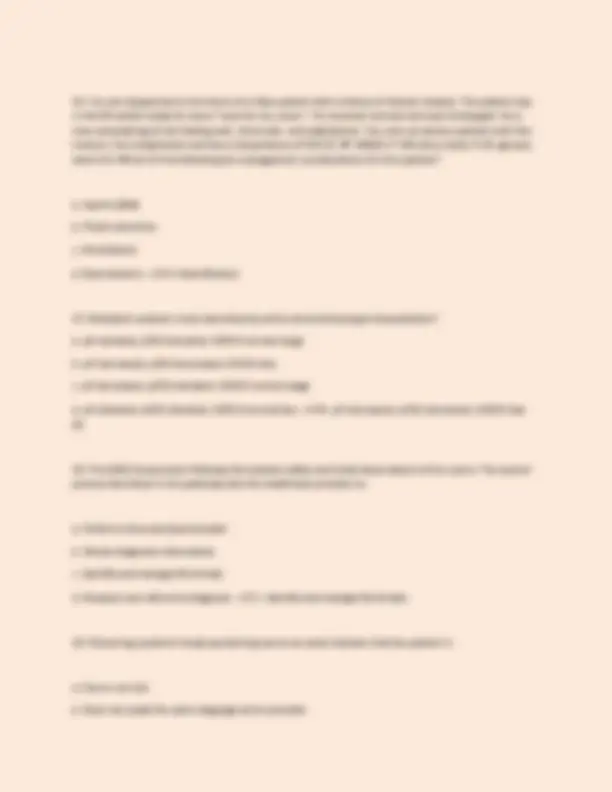
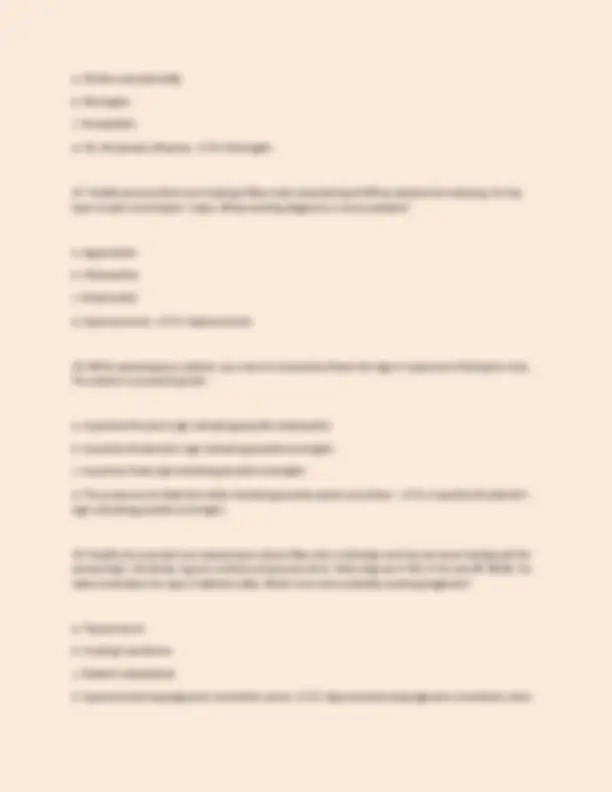
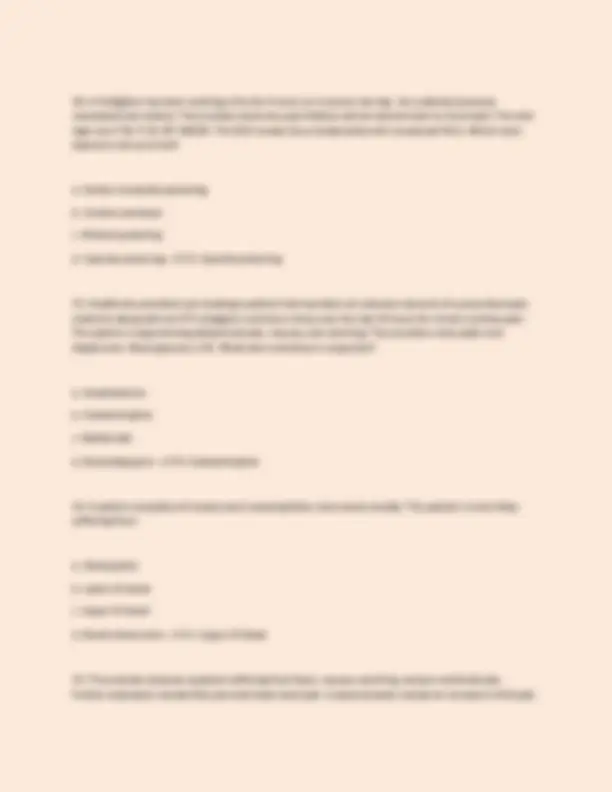
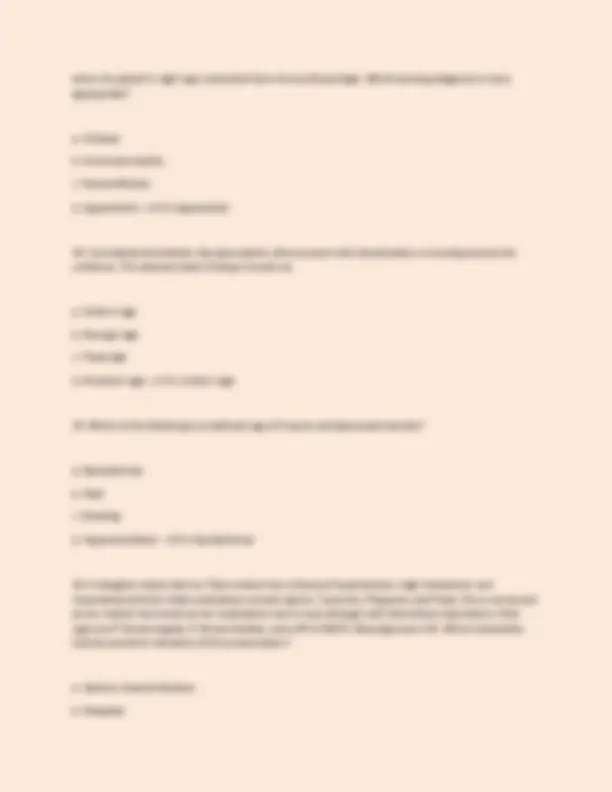
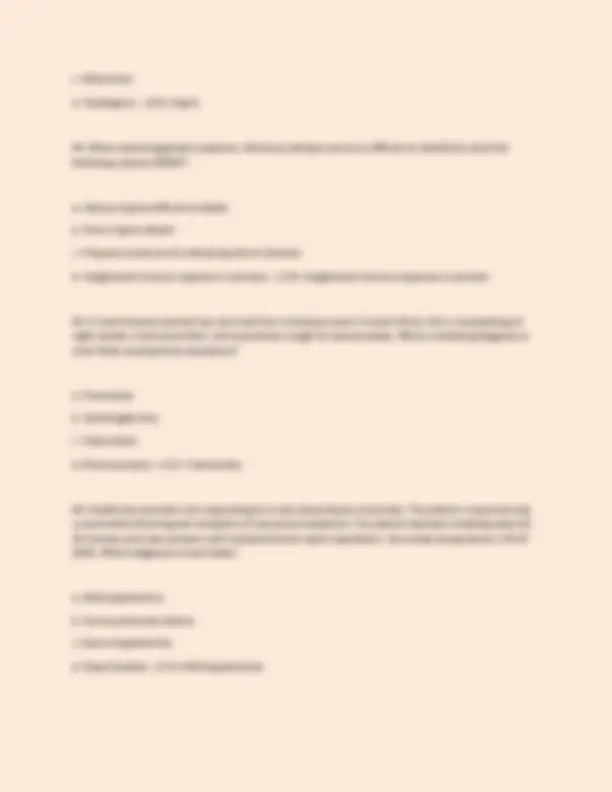
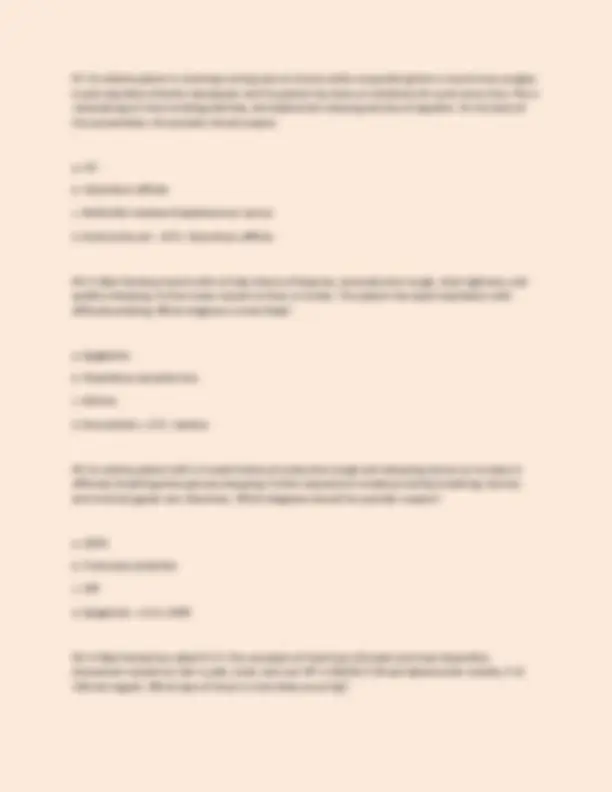



Study with the several resources on Docsity

Earn points by helping other students or get them with a premium plan


Prepare for your exams
Study with the several resources on Docsity

Earn points to download
Earn points by helping other students or get them with a premium plan
Community
Ask the community for help and clear up your study doubts
Discover the best universities in your country according to Docsity users
Free resources
Download our free guides on studying techniques, anxiety management strategies, and thesis advice from Docsity tutors
1. A 45-year-old patient is found supine on the floor. Healthcare providers note pinpoint pupils, shallow respirations, and vomitus in and around the mouth. What course of action should be taken next? a. Initiate an IV and administer naloxone b. Supplemental oxygen and suction c. Obtain a blood glucose level d. Begin BVM ventilations - ✔✔b. Supplemental oxygen and suction 2. Patients with a history of COPD that present with an acute onset of shortness of breath are likely to have what condition? a. Pulmonary embolism b. Angina pectoris c. Angioedema d. Hypertensive crisis - ✔✔a. Pulmonary embolism 3. During compensatory shock, the renin-angiotensin-aldosterone system is activated to cause a/an: a. Increase in preload, afterload, and re-absorption of sodium b. Decrease in preload, afterload, and re-absorption of sodium
Typology: Exams
1 / 15

This page cannot be seen from the preview
Don't miss anything!










b. Rhonchi auscultated bilaterally with hypercarbia c. Crackles heard in the bases with bradycardia d. Fever, tachycardia, and tachypnea with increased work of breathing - ✔✔a. Clear breath sounds with tachypnea
He has a familial history of heart disease and takes a baby aspirin daily. What information is most concerning? a. Familial history of heart disease b. Recent stent placement c. Nausea and vomiting d. Daily use of aspirin - ✔✔b. Recent stent placement
a. Chicken pox (varicella) b. Meningitis c. Encephalitis d. H5, N1 (avian) influenza - ✔✔b. Meningitis
when the patient's right leg is extended from the hip (Psoas Sign). Which working diagnosis is most appropriate? a. GI bleed b. Acute pancreatitis c. Pleural effusion d. Appendicitis - ✔✔d. Appendicitis
c. Beta blocker d. Anticoagulant - ✔✔c. Beta blocker
c. Obstructive d. Cardiogenic - ✔✔b. Septic